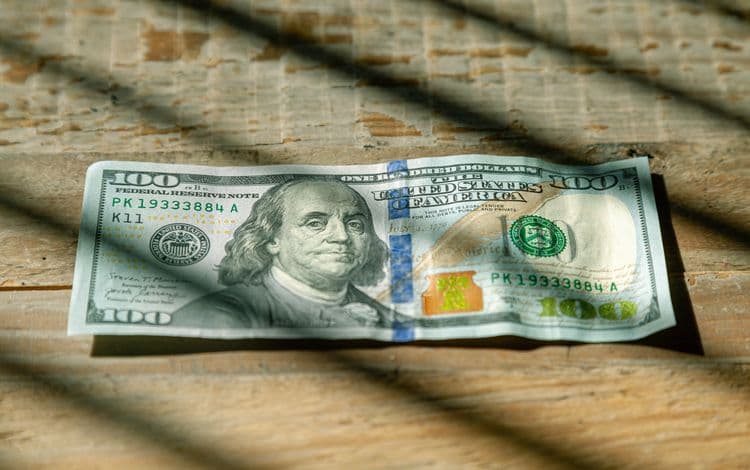One Pittsburgh based restaurant owner, Robert Miller, reflected with sadness as he thought about all of the area eateries that had shut down for good during the crisis. These were businesses that had been around for years and just like that were wiped out because of the pandemic.
Miller himself feared that he'd lose his restaurant as well; fortunately, however, the PPP funds that he did receive allowed him to keep the doors open during the worst of it.
Mr. Miller owns 3 venues which include: Sidelines Bar and Grill, Sidelines Beer House, and The Fire Side Public House. All told the places received a total of 212k in relief funds. Plus, he got another 775k from the Economic Injury Disaster Loan program.
The hard part though for Miller, among other business owners, is that the PPP funds are now gone. And compared with this time last year, the businesses' overall sales are down by more than fifty percent. On top of that, because of a surge in cases, the Pennsylvania governor restricted bar and restaurant activity again to try and curb this new spread. When asked about his future, Miller gave the businesses at most eight more months if he didn't receive any additional aid from either state or federal governments.
The PPP funds that the SBA issued did indeed carry many a small business through this most challenging time. It was absolutely a lifeline for so many that would have had to otherwise shutter for good. Created by the CARES Act, the PPP was designed to assist smaller companies in need during the pandemic. Loans of up to 10 million were issued to numerous businesses across the US.
The biggest draw of the loan was that as long as the funds were used by guidelines, much of the loan did not have to be paid back. The bulk of the money did have to go toward employee expenses, but owners could also use funds for rent, utilities, and operating costs. However, as with Mr. Miller, the question is what happens now? Now that the funds have been exhausted and businesses cannot apply for a second PPP loan, how are they going to make it when things remain so uncertain, economically speaking, in the US?
Lisa Hess, the owner of Lucy's Coffee in San Luis Obispo, California has a very similar problem. She took a PPP loan for 23k; those funds were utilized within six weeks. She is left wondering how much longer until this crisis subsides and she can get back to normal business. As was seen in Pennsylvania, California's governor also recently had to reclose bars and indoor dining because the virus was surging again in the state.
Hess's shop did manage to set up an outdoor dining section and has been serving customers that way. And while she can apply for funds through the Economic Injury Disaster Loan program, she is hesitant to take out more money, as no business owner is guaranteed that revenue will be coming in anytime soon thereby enabling them to pay back the loans. Hess doesn't see the point in taking out an immense amount of debt to keep the doors open now, only to falter later when she is shouldering the weight of all of that debt. At some point, according to Hess, something has got to give.
Emergency aid marked by major confusion
Beyond just the PPP, the government did open its disaster loan program up to all states. Almost 5 million businesses have received PPP funding—totaling roughly 518 billion given out thus far. The average loan size was right around 105k.
The disaster loan program saw about 135 billion in funding going out, that average loan size was closer to sixty thousand. In the initial phases especially, both programs saw numerous delays and a fair share of confusion. This made it increasingly difficult for companies to receive money when they needed it most.
Many experts have pinpointed the mistakes made when the programs first opened up. Primarily, one of the biggest was the fact that there were so many restrictions on the PPP funds and how they had to be used to qualify for loan forgiveness. Ultimately, what these rules did was increase tensions between company owners and their employees.
Additionally, the original rules only gave companies eight weeks to spend the funds to have the loan forgiven—this put many businesses in a precarious position. This eight-week deadline was eventually expanded to 24 weeks, but by then, for some, it was too little too late.
Robert Miller, upon finding out about the expanded deadline, realized he was pretty much out of luck, as he'd already spent seven weeks' worth of the funds because he was one of the earlier ones to receive the loan. Eight weeks, for Miller, really proved to be nothing. Especially given that after four months the country is still not certain when things are going to normalize. With the early PPP loan, 75% of the money had to be spent on payroll-related expenses, leaving little for operating costs and the like. This was eventually lowered to 60%, but once again, too little, too late.
On just those items required to keep restaurants open, things such as masks and cleaning supplies, Miller is spending over $500 a week. Not to mention, the cost of maintaining an outdoor dining area so that he can continue to serve customers.
First Union Lending wants to help you make it through this crisis. We have been working with small business owners as they navigate their way through challenging territory. There is still time to apply for a PPP loan if you haven't already done so. We can walk you through the process step by step. You are not in this alone. Call today and let's get started together.
